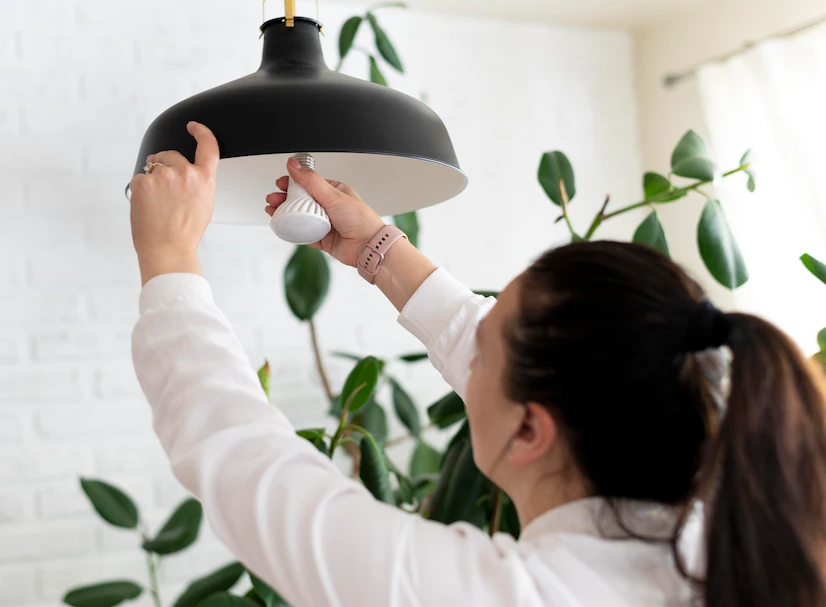Looking to cut back on your energy usage and give your bottom line a healthy boost? You’re in luck.
Swapping out your commercial building’s old lighting for LEDs isn’t just a smart move; it’s a total game-changer. LEDs use up to 75% less energy than traditional bulbs and can last up to 20 times longer. As a result, improving energy efficiency in commercial buildings by transitioning to LED lighting can lead to substantial long-term savings.
Sure, there’s an upfront cost to consider, but the savings you’ll see on your electricity bills will soon make it worth your while. Plus, you’ll be doing your bit for the environment by reducing your carbon footprint and energy consumption.
Ready to dive into the world of energy efficiency and see how making the switch to LED lighting can benefit your commercial building? Let’s get started!
Understanding The Role Of LED Lighting In Energy Efficiency
When it comes to boosting energy efficiency in commercial buildings, LED lighting plays a crucial role. These bulbs not only cut energy consumption by a whopping 75%, but they also save you money and help the environment.
LED lights have a lot going for them. They can last up to 20 times longer than traditional bulbs, cutting down on maintenance costs. They also give off less heat and fewer greenhouse gases, making for a safer work environment and a smaller carbon footprint.
The initial cost of switching to LEDs might be a bit steep, but the long-term energy savings and potential rebates make it a smart move. Just compare your electricity bills before and after the upgrade, and you’ll see a clear drop in energy usage and costs.
Analysing Cost-Benefit Of Switching To LED Lights
By analysing the cost-benefit of switching to LED lights, you’ll see that the long-term savings far outweigh the initial expenses. First off, consider the drop in energy consumption; LED lights use 75% less energy than conventional options, which translates directly into lower electricity bills.
Then there’s the impressive lifespan of LED lights. They outlast traditional bulbs by up to 20 times, saving you money on replacements and cutting down on the labour and downtime that come with frequent bulb changes.
Plus, LED lights give off significantly less heat, boosting workplace safety and cutting cooling costs.
And don’t forget many energy companies offer rebates for LED upgrades, helping to offset your initial investment.
Evaluating The Initial Investment For LED Conversion
Yeah, the upfront cost of switching to LED lights can seem steep. But when you factor in the long-term savings and potential rebates, it becomes much more palatable.
The cost depends on things like the efficiency of the lighting product, the size of your space, and the number of fixtures that need replacing. But don’t let that number scare you off. There are plenty of programs that offer financial incentives to help reduce the initial cost.
Keep in mind, the higher upfront cost can be significantly offset by substantial energy savings and rebates over time. So, when weighing the initial cost, always consider the return on investment and the long-term savings.
At the end of the day, despite the initial outlay, making the switch to LED lights can bring substantial financial benefits and energy savings for your business.
Assessing The Impact On Electricity Bills After Upgrading To LED
Once you’ve upgraded to LED lighting, it’s worth keeping an eye on your electricity bills to see the difference in energy usage and cost. You’ll likely notice a reduction in your energy consumption, translating to substantial savings over time. After all, LED lights use about 75% less energy than conventional lighting options.
Here’s what to focus on:
Energy Usage: Compare your bills before and after the upgrade. You should see a lower number post-upgrade.
Cost Savings: Crunch the numbers on your bills from before and after the upgrade. You might be pleasantly surprised by the savings!
Return on Investment: Weigh the initial cost of the LED lights against the savings on your bills. You’ll see that the investment pays off.
Realising Long-Term Energy Savings Through LED Lights
In the long run, switching to LED lights can seriously reduce your operation and maintenance costs. These energy-efficient bulbs use up to 90% less power than traditional lighting options, directly translating to substantial savings on your monthly electricity bills. Plus, with an average lifespan of around 50,000 hours, LED lights seriously outlast conventional bulbs.
Fewer replacements mean lower maintenance costs over time. By making the switch, you’re not only optimising your financial resources but also doing your bit for the planet by reducing greenhouse gas emissions.
You’ve seen how making the switch to LED lighting can significantly boost energy efficiency in your commercial building. The initial investment might seem substantial, but the long-term savings on your electricity bills are undeniable. By analysing your electricity bills before and after the upgrade, you’ll witness the tangible benefits of lower energy usage and cost. Plus, you’re contributing to environmental sustainability by using a more energy-efficient and eco-friendly lighting solution.
But where does a commercial electrician fit into all of this? A skilled commercial electrician can play a crucial role in the process of improving energy efficiency in your building. They can conduct comprehensive energy audits, pinpoint inefficiencies in your lighting system, and provide expert advice on the most suitable LED lighting solutions for your space. They can also handle the installation and maintenance of your new LED fixtures, ensuring they’re optimised for energy savings.
Furthermore, a commercial electrician can assist in applying for rebates or incentives from energy companies, helping offset the initial cost of the upgrade. They can also educate your employees and tenants about the importance of energy efficiency and provide recommendations for further energy-saving practices.
So, don’t wait any longer. Consult with a trusted commercial electrician and make the smart move to LED lighting today. You’ll see your energy costs plummet, your efficiency soar, and your contribution to a more sustainable planet increase. The future is bright, and it’s time to let your business shine in the best light possible.
Read Also:





























